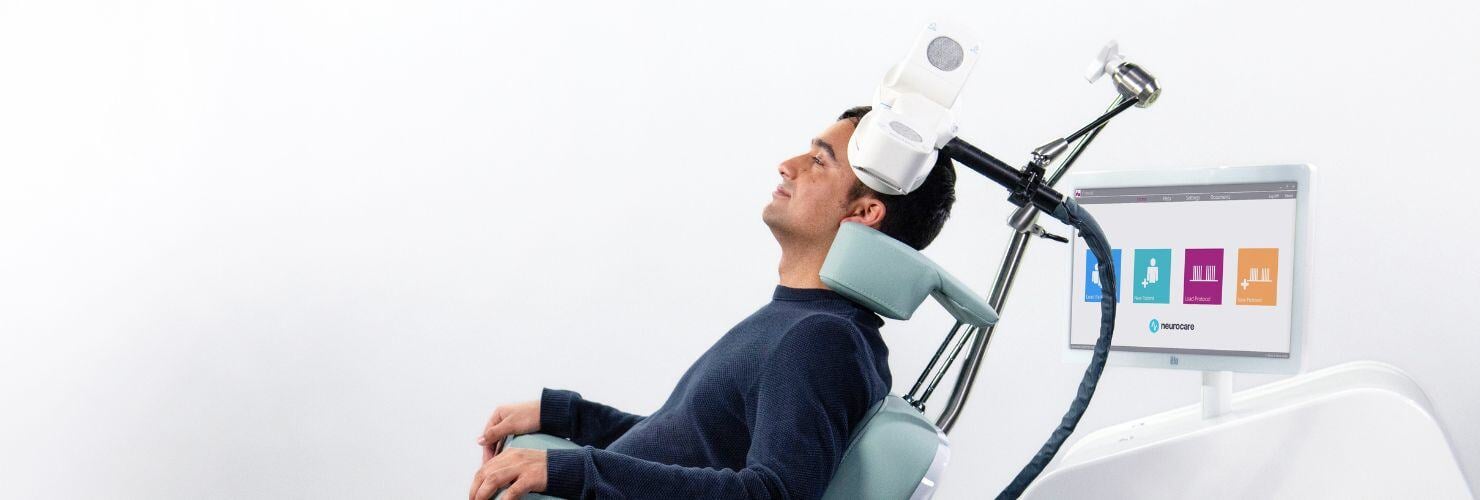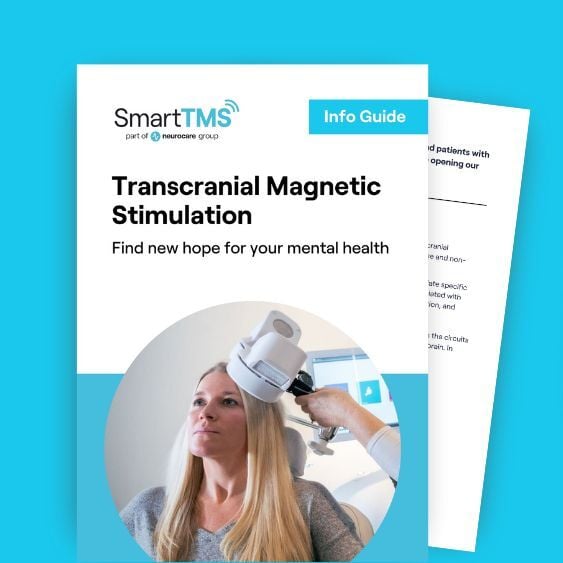Treating PTSD with TMS - the evidence
Can PTSD be treated with transcranial magnetic stimulation? Smart TMS has effectively treated Post-Traumatic Stress Disorder (PTSD) and a majority of patients have seen a significant drop in the severity of their symptoms after receiving treatment.

What is the recommended treatment for PTSD?
The 2018, NICE Guidelines for the management of PTSD recommend 8 to 12 trauma focused Cognitive Behaviour Therapy sessions. Other psychological treatment such as EMDR or exposure therapy may also be beneficial. Medication can alleviate some of the symptoms of PTSD and drugs which are licensed in the UK for PTSD include Sertraline and Paroxetine, although the NICE Guidelines also recommend Venlafaxine and Risperidone. It appears from research that about two thirds of patients with PTSD will recover either spontaneously or with treatment over a 6-year period and a third will go on to develop a more chronic long-term illness.
How does Transcranial Magnetic Stimulation (TMS) work?
TMS stimulates the brain through magnetic fields over the scalp. The passage of the electric current in the coil induces a transient, high-intensity magnetic pulse that penetrates the scalp and painlessly reaches the neurons of the targeted cortical area. TMS changes the amount of electrical activity in the surface of the brain. This change in cortical activity is able to produce both physiological and behavioural effects. NICE considers that TMS is safe and effective in the treatment of depression.
Can TMS treat PTSD?
There have been 5 published reviews of randomised controlled studies (RCTs) of the treatment of PTSD with TMS. Earlier reviews included Berlim et al (2014), Trevizol et al (2016) and Yan et al (2017).
More recently Harris et al (2021. J Affect Disord. 289:55-65) found an overall treatment Effect Size of 1.44. To put his into context a recent published treatment Effect Size for EMDR in the treatment of PTSD was 1.19 and for CBT it was 0.72 (Jericho et al. 2021. Acta Psychiatrica Scandinavia).
In another recent review of TMS treatment for PTSD (Belsher et al. 2021. Journal of Psychiatric Research 138: 598-606) it was found the overall Standardized Mean Difference (SMD) for the effectiveness of PTSD was -1.13 and to put this into context the drug Prazosin, which is used to treat PTSD, has an overall SMD of -0.31 (Reist et al (2021) CNS Spectr 26(4):338-344). These are complicated statistics to digest. However, in 2018, Carpenter, treated 35 patients with PTSD with TMS and found that PTSD symptoms were significantly reduced in 23/35 (66%) of the patients. All of the TMS treatment studies for PTSD, indicate that TMS is a safe form of treatment.
What are the treatment results at Smart TMS?
At Smart TMS, we have data on a case series of 16 patients who were treated for PTSD with TMS. We found that, overall, 82% of the patients treated for PTSD had at least a 20% improvement in their symptoms, as shown by a reduction in their IES-R score. Additionally, 44% (7/16) patients went into remission, and no longer fulfilled diagnostic criteria for clinical PTSD.
Conclusions and recommendations:
We recommend that patients should always follow the NICE Guidelines with respect to the treatment of PTSD. There is scientific evidence that TMS treatment is effective in the treatment of PTSD and has been shown to be more effective than CBT and EMDR. TMS significantly reduces PTSD symptoms in the majority of PTSD patients. Patients with persistent and resistant PTSD should consider TMS as a possible treatment option.

Dr Leigh A Neal MB BCh FRCPsych MRCGP MD
Consultant in Psychiatry and Neuromodulation
Medical Director: Smart TMS










